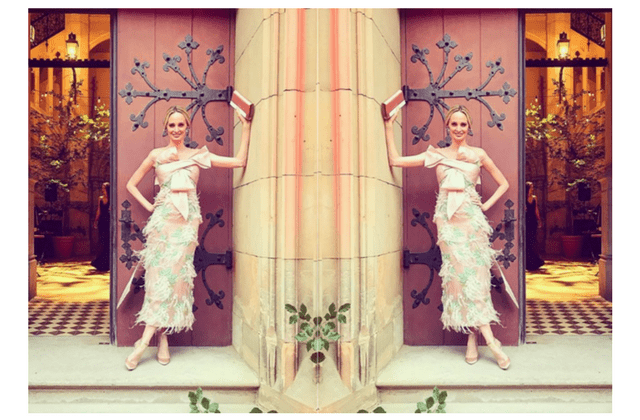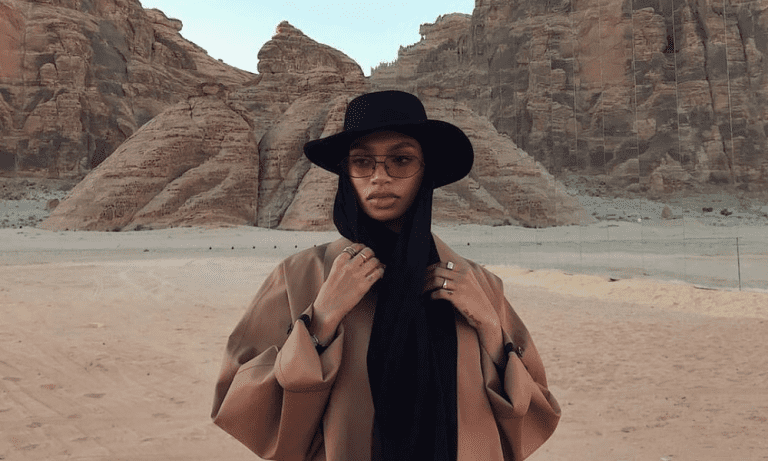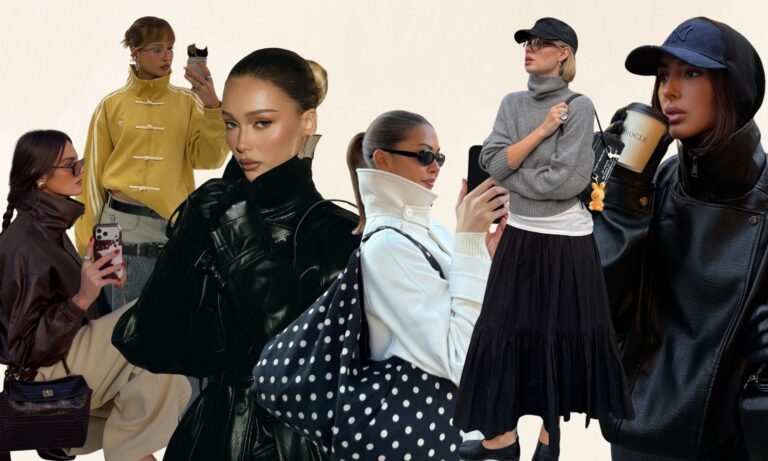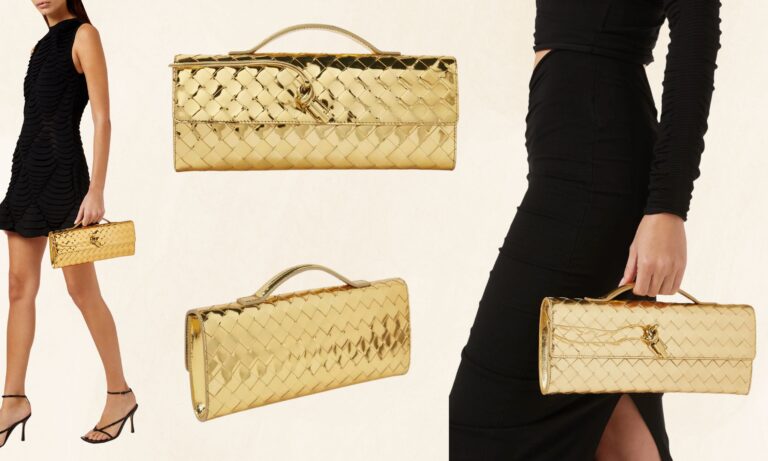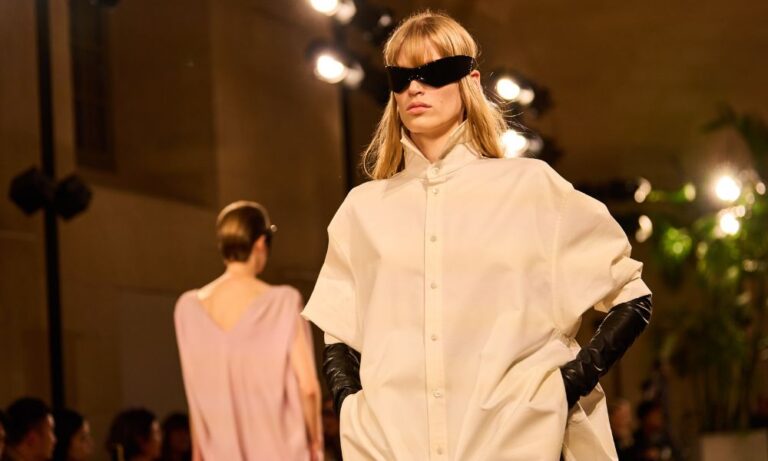Sitting at The Lighthouse in d3, it’s evident from the moment that Lauren Santo Domingo walks in to the restaurant that she’s a powerhouse presence. Friendly, intelligent and down-to-earth, she’s incredibly normal for someone so successful. She co-founded e-commerce giant Moda Operandi in 2011, a unique online platform offering consumers the concept of buy now well before it was the done thing in fashion and seven years later it shows no signs of slowing anytime soon. Home to several Middle Eastern designers, the site champions design talent big and small, offering consumers the opportunity to learn as well as land the newest must-have pieces.
Santo Domingo is in town — her first visit to the region — to celebrate two partnerships. The first is with Arabian Gazelles whereby Moda set up a style suite at the Bulgari Hotel to unveil this year’s Ramadan collection, and the second was with Etihad to co-host the ‘A Night at the Museum’ event at the Louvre Abu Dhabi to celebrate and support local design talent in the UAE. Here, Buro 24/7 Middle East’s Managing Director Maddison Glendinning caught up with her to talk talent, style and first impressions.
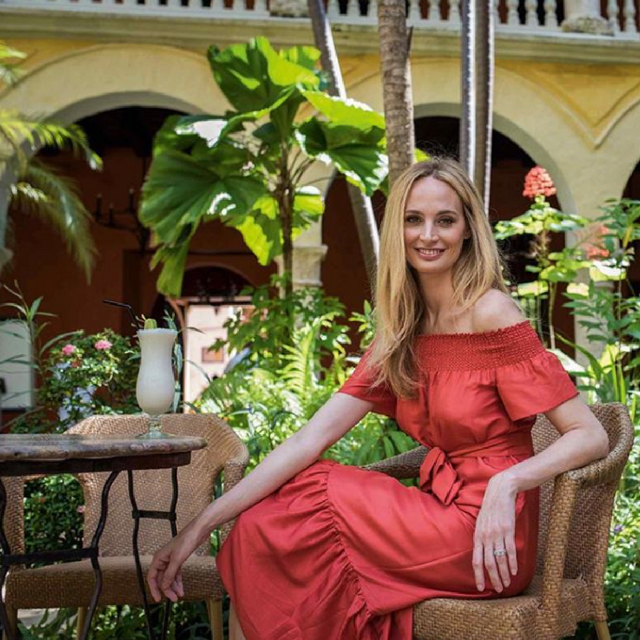
Welcome to the region! This is your first trip?
Yes I’ve never been! It seemed so far away. My oldest son and the business are the exact same age. So we launched February 2011 and I had my son April 2011 so I spent the first five years making up excuses not to travel and now I’ve spent the last two years being like, get me out of here now that they’re older.
I’m so happy to be here. We were waiting for the right opportunity. We have so many designers from the region. It feels like the perfect time.
You do have so many regional designers on site.
We do! There’s so much talent. I think what also happens is that a lot of designers are designing for the local community and not really looking outside and once we give them this platform to reach an international audience it changes their perspective. It brings out the best in their design. It makes sense, and it expands not only their business but their attitude. What happens is that the good ones rise to the top and the ones that can’t evolve get left behind. We really work with the designers helping them grow their business. The world is so small right now that it’s such an easy leap for designers to reach a bigger audience.
E-commerce made the world a lot smaller in that sense…
Yeah and with social media you’re so connected to people outside of where you live so all of sudden having global reach isn’t so foreign because you’re already connected.
But the designers here are great! I feel like the designers here, because of the lifestyle, get evening, they get glamour, there’s also great craftsmanship with beading and great textiles so our US or European customer is really drawn to it. They do it really well because it’s so authentic. It’s not like we’re convincing a California designer to do evening — they grew up with black tie weddings and parties and evening gowns so it’s so much more natural than sometimes an American designer doing eveningwear. Even the accessories, like L’AFSHAR and Marzook, Nathalie Trad — they get it.
Middle Eastern designers do eveningwear really well because it’s so authentic. It’s not like we’re convincing a California designer to do evening — they grew up with black tie weddings and parties and evening gowns so it’s so much more natural than sometimes an American designer doing eveningwear.
What’s your customer base like here in the Middle East?
The last time we reviewed, I want to say that Saudi is our biggest region and then the UAE and Qatar. But from the very, very beginning we’ve had a lot of support from Saudi. I have friends in the Saudi royal family, and it’s amazing because they’re all super connectors and were really eager to help me in the beginning and introduce people so I was really lucky in that way that people were really supportive of me. It made a huge difference.
I think there’s a loyalty in the Middle East that sets it apart from other markets in that once they fall in love with what you’re doing, they’ll champion you…
I completely agree. Even the designers we’re getting are recommended from other designers or from women who will tell us we have to meet this designer because all their girlfriends in Beirut are obsessed. So there is sort of super-connective tissue.
You mentioned earlier that it’s your first trip to the region, do you have much of a sense for the style of the Middle Eastern woman yet?
It’s very glamorous but there’s a laid-back vibe also because you’re near the beach but in the city. Rio and LA are kind of like that, too.
One of the things that surprised me most coming here — and when I’ve told people this they’re like, how did you not know this? — was the diversity of how many languages, how many nationalities and that there’s people from all over the world that have moved here and made their home here.
What I think is really interesting about Moda is that you guys introduced the ‘buy now’ concept well ahead of the ‘see now, buy now’ craze. What was it like when you first introduced it? Was there an education process that needed to take place?
Oh, it was impossible. Part of the reason that I wanted Moda to be successful was so that I could stop explaining it to people [laughs]. Whether it was an investor, a customer, a parent’s friend, someone sitting next to me at dinner, I had to explain the concept of pre-order and fashion week and fashion cycles and I became so sick of it that I thought I just need this thing to be so successful that I don’t need to explain this ever again. It was impossible, and it still is.
However, there are a lot of women who are tangentially connected to fashion who understand fashion cycles or had mothers who shopped couture, especially in the Middle East and in Saudi Arabia. That’s why it was so easy [to find support in Saudi because] they all had a culture where their mothers flew to Paris, placed their offers, things arrived, they had fittings — they understood the whole process. Whereas with a person who has grown up with ‘buy now, wear now’, walking into Banana Republic or GAP or buying something on Amazon Prime, there’s a huge disconnect between waiting for things.
Now with social media and with everyone posting pictures of runway shows, I have random women on the Upper East Side, the country club set, who have no clue about fashion, asking me, ‘When does Resort ship?’ using this really technical jargon. So whether it’s Moda that educated them or the fact that we have so much more access to knowledge now… But we did have to educate women on the fashion cycles. We also had to educate them on young designers.
There are a lot of women who are tangentially connected to fashion who understand fashion cycles or had mothers who shopped couture, especially in the Middle East and in Saudi Arabia. That’s why it was so easy [to find support in Saudi because] they all had a culture where their mothers flew to Paris, placed their offers, things arrived, they had fittings — they understood the whole process.
As in lesser known labels?
Yeah. They would only wear Chanel suits and Louboutins with their Hermès Birkins and you couldn’t get them in any other designer so we had to educate them and say yes have those heritage brands that deserve this place of exalted luxury however have fun, try new designers and have things that other people aren’t wearing. It was the idea that it’s maybe not cool to dress like your mother. It was almost harder to get these women out of these heritage brands than to get them to preorder. I mean they’ll wait 16 weeks for a throw pillow from their interior decorator, they can definitely wait three months for a gown.
In the Middle East there’s also a desire to want to wear pieces that no one else is wearing and to discover new labels and have people ask them about them…
Yes! I agree. What you’re wearing, a lot of times, is a topic of conversation. I remember watching the red carpet at one of these awards shows and they had all these actresses and the person would ask them who they were wearing and they’d say Valentino. Chanel. Prada. And that was it. Period. There’s no conversation. Whereas if someone asked me what I was wearing, I’d be like, “Oh it’s this scarf I picked up in Sicily, I wore it to my friends wedding” — you know it’s a conversation. Or it’s, “It’s this new designer SEMSEM from the UAE and she’s the most glamourous woman you have ever met.” It lets you have a dialogue. Sometimes when you’re wearing a [big name] designer it’s a conversation-ender. You’re like I’m wearing Chanel, now don’t talk to me again. And in the old days it was meant to be this way. But I don’t think the world is like that anymore and people want to have a conversation about it and learn things. I think fashion should be a conversation.
I think that women want to be a part of this world whereas fashion at one point was maybe a bit frivolous. Even when I started in fashion you know my husband and my mother-in-law were like, can’t you work at Sotheby’s or something? Fashion was considered a bit frivolous and now it’s not. And women are delighted to be a part of this world and have a conversation about it. Women can participate actively in fashion on Moda by educating themselves on new designers and supporting them and continuing to be curious.
And how do you feel fashion helps to empower women?
I think it tells people who you are. I think you used to wear certain looks as an identifier that would tell people who you are, what your background was, where you came from. Now I think women are much more free to express themselves and wear whatever they want and to transform every season. I learnt this from Anna Wintour that fashion has a transformative power and that you can use it to tell the world and yourself who you are or who you want to be.
I think fashion should be a conversation.
You mentioned Anna Wintour, who has served as an inspiration for you. What other women inspire you?
I worked for Anna Wintour and Carolina Herrera who are two women who are so in charge of their own domain. They were tough but at the same time really supportive and nurturing of people that were talented. I admired that and I feel like there are a lot of people that they are responsible for — they brought so many people along with them for the ride. And that’s something that has always interested me, with the young designers, giving them a platform and helping them grow.
Our CEO is a genius and helps their businesses to grow so we don’t just smack them up on the site and say good luck! Our CEO will sit with them and help them with production, sizing. I think that’s a lot of what Moda is — is helping everyone, whether it’s a woman through her clothes or a designer on our platform, to be the best possible version of themselves.
What are you most excited about in this year’s Ramadan capsule that you’re officially launching tonight? Is there one hero piece in your mind?
Funnily enough I go every Christmas and New Years to Cartagena, Colombia, with my husband’s family who have this beautiful beach resort there. For whatever reason we only wear kaftans when we’re there — during the day at the beach and then at night for dinner, so when the Ramadan collection comes out, I’m like here’s my New Years wardrobe! I am the first one to dig into it.
Now, see the Lebanese designer recently picked up by Moda Operandi.
